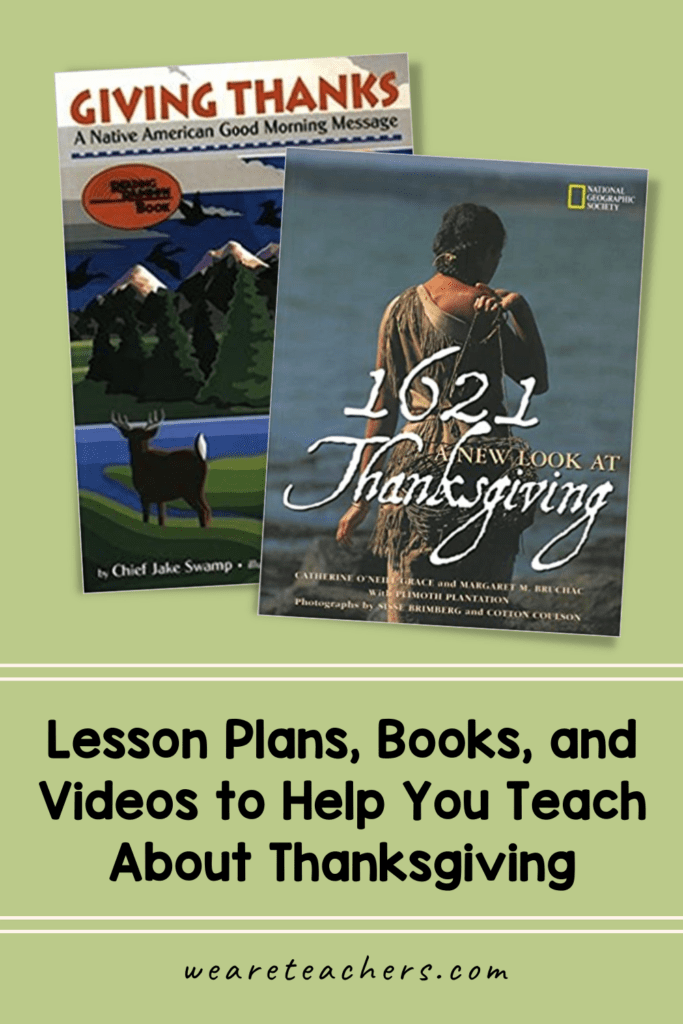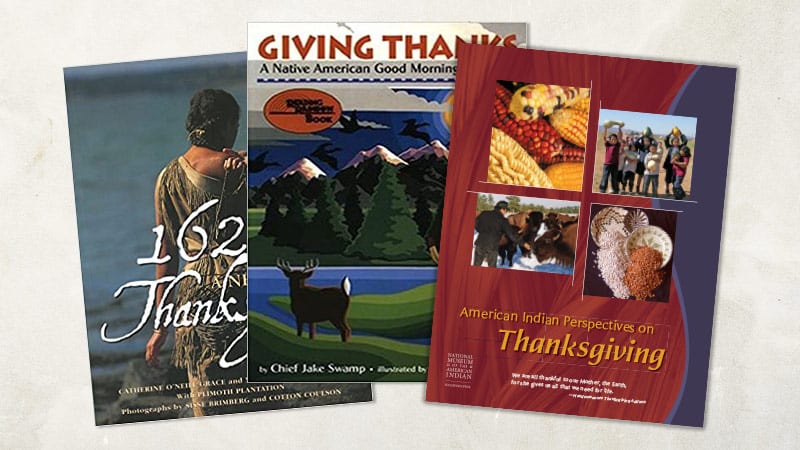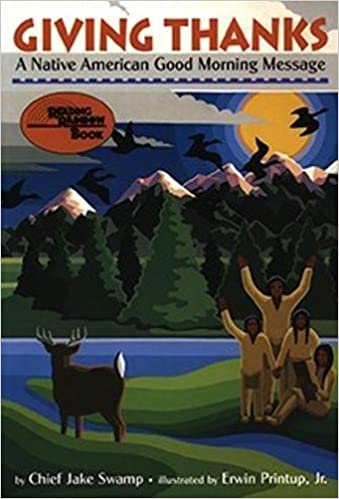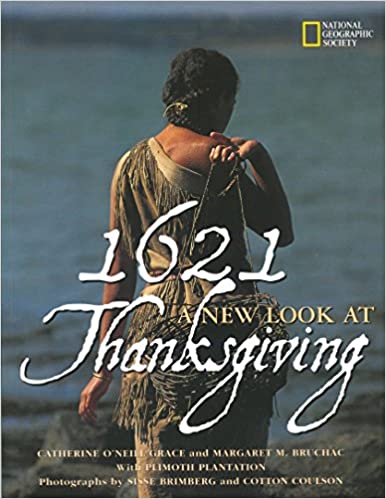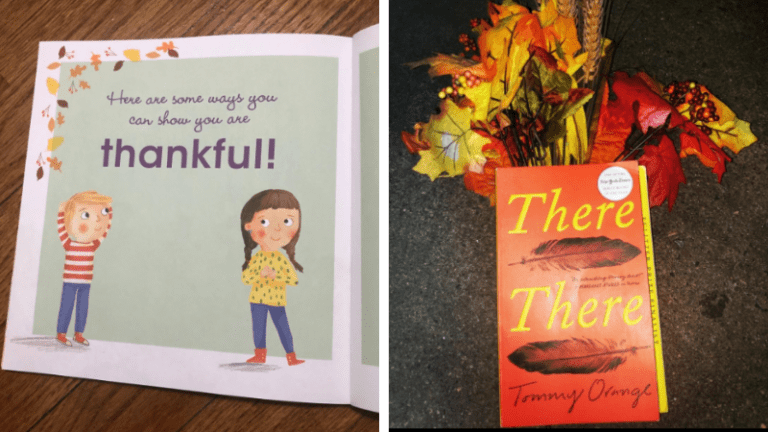Over the past few years, many of us have made a commitment to change the way we teach Thanksgiving. We’re rejecting narratives that romanticize the relationship between the Pilgrims and Native Americans and ditching activities that appropriate Native culture at the same time they stereotype it (feather headdresses made of construction paper, anyone?). But replacing those lessons with material that includes Native perspectives has proven to be more challenging than we expected. So, we gathered all kinds of resources (lesson plans, books, videos, and more) that you can use to teach Thanksgiving in a socially responsible way. Take a look:
Lessons, Guides, and Activities
Thanksgiving Mourning
For many Native Americans, Thanksgiving is a painful reminder of everything they lost with the arrival of Europeans. Instead, they observe a Day of Mourning. In this lesson from Learning for Justice, students in grades 6-12 have the opportunity to examine and reflect on Native perspectives on Thanksgiving.
American Indian Perspectives on Thanksgiving
From the National Museum of the American Indian comes this guide for teachers. Inside, you’ll find essential background information along with ideas for your grade 4-8 classroom, including how to teach new perspectives all year long.
Thanksgiving Through the Eyes of The Wampanoag People
In this PBS News Hour lesson, high school students learn about the Wampanoag people, the ancestors of the Native American tribes who welcomed the Pilgrims at Plymouth nearly 400 years ago, as well as current issues facing Wampanoags.
Thanksgiving Interactive: You Are the Historian
This interactive simulation from Plimoth Patuxet recently got an update! The new online game explores Wampanoag life prior to European settlement and the year leading up to the 1621 harvest feast, today known as the “First Thanksgiving.” It was produced in conjunction with an Indigenous Advisory Committee to ensure Indigenous perspectives.
Books
Giving Thanks: A Native American Good Morning Message
This children’s version of the Thanksgiving Address (a message of gratitude still spoken at ceremonial gatherings held by the Iroquois Nation) beautifully conveys Native beliefs—messages of love and gratitude and appreciation for the earth. Own Voices author and appropriate for elementary.
1621: A New Look at Thanksgiving
This offering from National Geographic presents a more balanced version of the three-day celebration that took place in 1621. And with its stunning photography, maps, and interesting facts, your students are certain to learn something new. Appropriate for upper elementary and middle school.
Videos
Miss Native American U.S.A. Reflects On Thanksgiving
Autumn Rose Miskweminanocsqua Williams’ reflection on identity and empowerment is an important message for students of all identities and a much-needed reminder that American Indians are still here.
One Word: Thanksgiving
In this episode of the “One Word” series from The Cut, Indigenous People respond to a single word: Thanksgiving. Their responses are both powerful and haunting. Appropriate for middle to high school students.
The Harsh Truth About Thanksgiving
Native activist and playwright Larissa FastHorse invites viewers to question what they know about the holiday. Appropriate for high schoolers (great for adults, too!).
Other Resources
Parent Letter
If you anticipate pushback on families (and that can happen if you cancel the annual Thanksgiving play), then you’re going to want this letter. It does a great job explaining the why behind the shift and how it fits into a larger anti-bias framework.
Q&A
This one’s for us. The National Education Association interviewed the Director of Native American Student Services for Oklahoma City Public Schools (OKCPS) and a member of the Keetowah Cherokees, Dr. Star Yellowfish. She gives practical advice for meaningful ways educators can teach about Thanksgiving as well as what to avoid.
Native Land
Now is a great time to show your students (and maybe even learn yourself) whose land you’re on. On this interactive map, you can enter your address and get more information about individual Indigenous nations, languages, and treaties.
Interested in more resources like this? Be sure to subscribe to our newsletters!
Plus, books by Indigenous authors.
